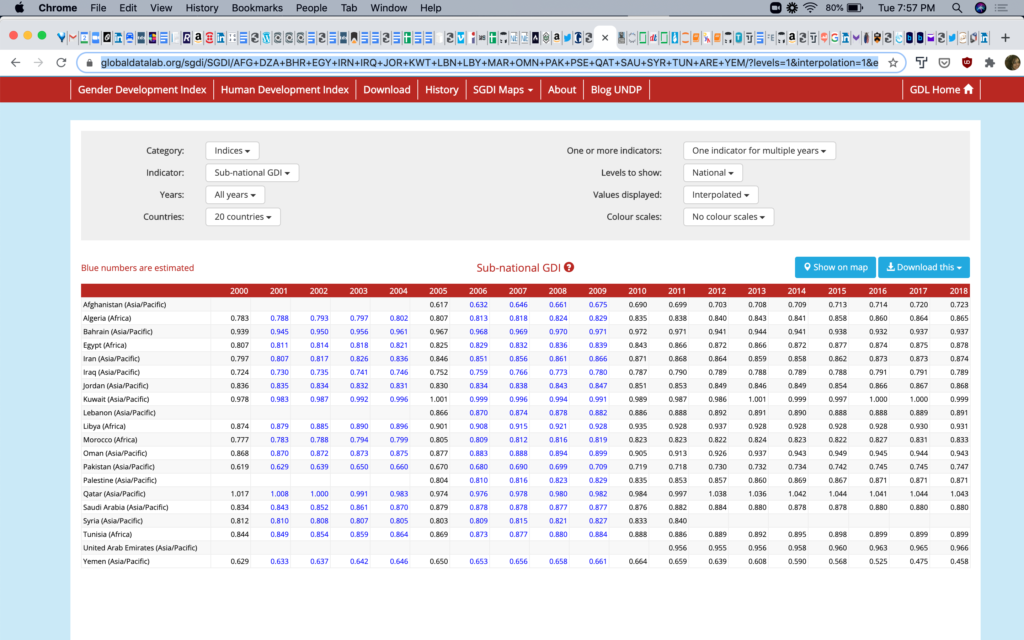There’s story-telling. There’s tattle-telling. Then there’s data-telling. How much does a country’s data collection efforts reflect its social, economic, political, institutional, civic, human and health development? Given the global pandemic of COVID-19, PITAPOLICY argues that the data transparency correlates with the pace of development. Reporting on population’s health statistics indicate the level and role governmental support and infrastructure. Data informs decision-making and resource allocation–in public, private, and third sectors.
October 20th marked World #StatsDay2020. Given PITAPOLICY’s focus on data in the Middle East & North Africa region, we captured statistics and metrics on human development, gender, as well as economic and social indicators to highlight various slices of this socio-economically and politically diverse region.
MENA Regional Statistics
MENA Social-Political Statistics
MENA Gender Statistics

Subnational Gender Development Index for MENA countries
Country Case: Syria
Country Case Study: Morocco
Economic Indicators
Country Case: Lebanon
For example, the Tahrir Institute highlighted Lebanon since its Beirut Explosion from September. Over 2,700 tons of ammonium nitrate exploded in Beirut’s port, leaving 190 dead and over 6,500 injured. Watch the panelists responses to Lebanon’s ground relief in the larger socio-economic context here: 10/21 Virtual Event: Food Security, Economy, and Accountability in the Wake of the Beirut Blast.
@chehayebk, Dima Krayem, and @malakyz spoke to Moderator, @GebeilyM, to unpack the issue of Lebanon’s food security amid the economic & governance context.
Multi-Dimensional Poverty Case Study: Palestine
Conclusion
Regardless of individual country income or political structures, MENA region needs to improve data collection and data transparency efforts as a whole.

